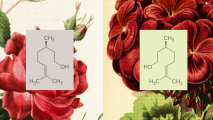In the early 1900s, a prison surgeon infamously transplanted the testicles of young inmates and animals into older prisoners to revitalize them with youth and vigor. Another doctor heralded the opposite — he tied off a sperm-carrying tube in men’s testicles, limiting the swimmers’ release in an attempt to rejuvenate the body with energy. Then there was the notorious Countess Elizabeth Báthory, who bathed in the blood of young virgins to try to retain her youth.
Such strange anti-aging interventions aren’t going viral on TikTok today. But the ones that are remain equally bizarre — and equally ineffective, according to the experts.
Vitamin overdrive
Supplements are a key part of Bryan Johnson’s life. The poster boy for the modern longevity movement starts each day with a scoop of “Longevity Mix,” a proprietary product containing 14 ingredients, including creatine and ashwagandha. By the time he goes to sleep, he’ll have consumed a reported 74 compounds. Other wellness-obsessed celebs prefer taking their vitamins via their veins. Popular IV infusions peddled at pop-up spas and even your local Equinox gym promise to “restore balance” and “optimize wellness” with needles that pump your body full of B vitamins, magnesium, glutathione, and more.
But taking boatloads of supplements is likely a waste of money for those hoping to stay younger for longer. It could even be harmful, given that the pills could interact with one another or other medications you’re taking. As Steven N. Austad, a distinguished professor and chair of Healthy Aging Research at the University of Alabama at Birmingham, puts it, “There’s very little evidence that — unless you have some dietary issues — taking excess vitamins or supplements helps do anything.”
The war on wrinkles
For many people, looking younger for longer is as important as actually living longer, making “anti-aging” a powerful marketing tool for cosmetic treatments. And in some cases, the claims are plausible — if not always practical. Red light therapy, for one, uses a laser or other tool to expose the skin to light at wavelengths of approximately 610–660 nanometers, which is thought to stimulate cells’ mitochondria, boost collagen production, and promote healing, said Glenicia Nosworthy, an internal medicine and aesthetic physician who founded Glo By Glen in New York. But for many people, visible results require regular sessions, and zapping your skin isn’t going to be enough to offset bad lifestyle choices, like poor eating or sleeping habits.
More bizarre are salmon sperm facials, which use, yes, nutrients found in the fish’s milt to freshen up the skin by injection, serum, or mask. How well they actually work is still unclear, though. There’s also the bee-venom facial, a favorite of Kate Middleton. A small study in South Korea found it may actually reduce the appearance of wrinkles. And we can’t forget the vampire facial, which isn’t quite as scary as it sounds. The procedure uses microneedles to create tiny punctures in your skin, allowing plasma taken from your own blood to enter. This prompts collagen and elastin production, which small studies suggest might smooth and brighten your complexion. Sure, spending hundreds to rejuvenate your outsides won’t change how your insides age. But unlike Báthory’s sadistic protocols, at least the blood that’s involved in a vampire facial is your own.
Skip a meal, gain a decade?
Food is often a highlight of professional conferences — the events typically feature caterers slicing roast beef and waitstaff passing out wine and puff pastries. But when Austad attended a longevity conference focused on calorie restriction, the dinner offerings were leaves and seeds. His tablemate even whipped out a food scale before plunging his fork into the sad excuse for dinner. “Those are all people,” said Austad, “who have eating disorders, in my opinion.”
While extreme under-eating is the opposite of a longevity hack (anorexia nervosa is the deadliest mental illness), the theory that eating less leads to a longer life is, in fact, rooted in science. Researchers have long known that reducing a rat’s caloric intake by 30% to 40% will extend its life. Most humans can’t, and shouldn’t, do that, though. Rather, we seem to benefit most from some form of intermittent fasting, alternating periods of eating with periods of no caloric intake. This prompts the body to periodically burn fat rather than sugar, which may boost physiological functioning, physical performance, and slow aging and disease progression, a 2024 article in the journal Ageing Research Reviews concluded.
Hot, cold, and overhyped
Saunas and accompanying cold-water plunges have been a part of people’s wellness routines for centuries, and unlike testicle transplants, they might actually be effective. One robust study in JAMA Internal Medicine found that the more often Finnish men sauna-bathed, the less likely they were to die over the study period. Another big study, this one published in Preventive Medicine Reports, correlated more sauna time with lower dementia risk. Other research shows that cold therapy can reduce chronic inflammation and improve metabolic health — and anecdotally, some of the longest-living animals reside in the Arctic.
Experts suspect that controlled heat exposure, cold exposure, or both might be beneficial for some of the same reasons as fasting: They are healthy stresses that prompt the body to sharpen its cardiovascular, metabolic, hormonal, and other organ systems’ toolkits. “The more resilient your body is to any type of stress, whether it’s environmental stress, psychological stress, or physical stress, that’s what ultimately leads to longevity,” said Marcus Coplin, a naturopathic medical doctor in Los Angeles who specializes in Aufguss, a therapeutic sauna ritual that includes steam.
The concept makes sense, but the long-term evidence is thin. “It is possible that both heat treatment and cold treatment could be beneficial [for longevity],” said Austad. “But what unites all of these things is absolutely zero evidence — in people at least.”
High on oxygen, low on evidence
If a box full of heat isn’t your thing, how about a box full of oxygen? That’s essentially what a hyperbaric oxygen chamber is, and celebrities from Justin Bieber to LeBron James swear by the enclosures for health and longevity. Lie in the pressurized cabin for an hour or so a few times a week, and you’ll reap myriad benefits, say proponents.
But while there’s good evidence the chambers accelerate wound healing when used in emergency rooms, Austad’s not convinced breathing extra oxygen is going to do much for your long-term health. In fact, some people think less oxygen is the way to go, because your body produces cell-damaging molecules called free radicals when it metabolizes oxygen. “People in hyperbaric chambers are getting additional oxygen under pressure,” Austad said, “which should increase their free radical damage.”
A pint of youth?
Like vampire facial enthusiasts, Johnson has also tried to tap into the anti-aging allure of blood, undergoing exchanges using his son’s plasma. He found no benefit, but based on animal research, the treatment is conceptually sound. “There are factors in circulation in an old animal that are detrimental and in a young animal that are beneficial,” said Matt Kaeberlein, a biologist and CEO of healthspan technology company Optispan. “And when the old animal dilutes out the bad stuff and gets some of the good stuff, it lives longer and is healthier and vice versa.”
It’s a risky stretch, though, to presume a younger person’s blood will do the same. What does show promise, though? Therapeutic plasma exchange, in which clinicians remove your own plasma and replace it with albumin (the most prominent protein in plasma) and saline. “To me, therapeutic plasma exchange actually makes biological sense,” Kaeberlein said. That’s in part because it helps dilute out some of the inflammatory factors that accumulate with age, as well as potentially life-limiting residues of microplastics and heavy metals. “I’m pretty convinced by the data that, at least for some people, there are benefits,” said Kaeberlein, who’s tried the procedure himself and didn’t feel much different.
Cost is a big issue with this treatment, though: A single transfusion can cost $5,000 to $12,000, and the places offering them for overall wellness — rather than as a treatment for a medical condition — are poorly regulated. “If people want to do the most for their health right now, lifestyle is still where it’s at,” Kaeberlein said. That’s all the old-fashioned basics, like eating mostly whole foods, moving your body regularly, managing stress, maintaining strong social connections, and prioritizing sleep. “There is no magic pill,” he said. At least for now.
We’d love to hear from you! If you have a comment about this article or if you have a tip for a future Freethink story, please email us at [email protected].





















